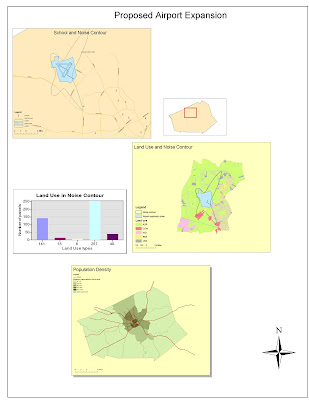Southern Califo

rnia is has a dry climate which in combination with heavy amounts of top layer brush leads to a high risk of wildfire. These wildfires are seen as a “major environmental hazard” and they have hit California hard “costing over 800 million dollars” (5). The extensive damage from these fires arises first from their frequency. California suffers from two kinds of wildfires, natural and unnatural. A natural wildfire can be helpful for the environment, burning away excess plant layers to give way to new life. Unfortunately, these natural wildfires are out weighted by unnatural wildfires caused by humans. Once a fire has begun the geography of California increases the risk of the fire spreading. The dry climate encourages burning and the winds of California spread the fire throughout a large area. The California Station Fire which raged from August 26 to October 16 2009 was a perfect example of the high risk that wildfires have in California. The most serious risk these fires present, as the Station fire did, is the encroachment of the fire into major cities risking the property and more importantly the lives of California citizens.
The Station Fire “forced thousands of evacuations and threatened thousands of structures “ (3) and really spread fear throughout southern California. In reference to the map, cities such as La Crescenta, Altadena, Montrose, Sierra Madre were severely threaten by the fire. As the fire approached these cities there became a greater cause for concern as these cities hold a rather significant population. In addition to the danger of the burning, the air quality in these cities became very poor due to the high amounts of smoke and ash in the air. However, the rapid spread of this fire into these areas is what made the fire so dangerous. This rapid burning had is related to the land cover of the area.
In regards to the aspects of the Station Fire a critical element of analyze is the land cover of California. This land cover analysis can help indentify key areas that are high risk to wildfires (4). The Station Fire took place in a very dry area that had mass to be burned. These perfect conditions for a fire lead to the massive expansion of the fire. The cities that were endangered were located in these conditions of dry land cover which almost in a way guided the fire towards them. The Station Fire presented California with

a very dangerous situation and really pushed the issue of wildfire prevention.
California, in response to the danger of the Station Fire and many other wildfires, has created a strong prevention program to help protect the citizens of California. These prevention organizations, such as the California Department of Forestry and Fire Protection, describe the situation ““The ever-increasing number of structures and people in California create an ever-growing need for fire prevention and planning for inevitable fires that will occur in the state.” (2). This same prevention program was in place when during the Station Fire but the fire was so large and spread so quickly there was almost nothing they could do about. Thus the goal of these preventions is not to stop wildfires but learn how to control them effectively so they can preserve lives.
Southern California is always at risk of wildfires and these dangers are something that all citizens should recognize (1). The Station Fire in 2009 served as a reminder to California the serious danger that wildfires impose on communities and lives. The fire, led by near perfect wildfire conditions, swept across Los Angeles County and placed many citizens of major cities in danger. Also these dangers reminded California to focus on its wildfire prevention programs and hopefully someday this large risk of wildfires can be reduced by advancements in wildfire prevention
Sources
1. Asbury, John. "California Fire News." Web log post. "Fire, Flood, Earthquake California Disaster Information". Web. 17 May 2010.
.
2. California Department of Forestry and Fire Protection. Web. 17 May 2010. .
3. Einhorn, Harold. “Angry Fire Roars across 100,000 California Acres." CNN. 31 Apr. 2009. Web. 17 May 2010.
4. "Landfire Analysis and Use." Landfire. Web. 17 May 2010. .
5. Wienstein, Josh T. "Global Warming and California Wildfires." Union of Concerned Scientist (2008). Web. 17 May 2010. .











